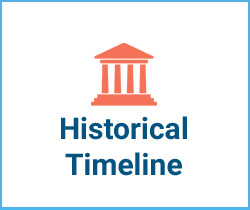
| 1. | An estimated 5,177,780 Americans could not vote due to a felony conviction in 2020, about 2.27% of the US voting population. [1] |
| 2. | In 1792 Kentucky became the first US state to ban convicted criminals from voting. [2] |
| 3. | As of Apr. 12, 2021, 11 states may permanently disenfranchise people convicted of certain felonies: Alabama, Arizona, Delaware, Florida, Iowa, Kentucky, Maryland, Mississippi, Missouri, Tennessee, and Wyoming. [3] |
| 4. | In 2020, Mississippi had the highest percentage of disenfranchised voters (10.55%) of any state. Followed by Tennessee (9.09%) and Alabama (8.94%). [1] |
| 5. | In 2019, US jails and prisons housed 2,086,600 people, almost the populations of Alaska, North Dakota, and Vermont combined (2,117,596). [4] |
| 6. | Maine and Vermont are the only two states where felons are permitted to vote while in prison. [3] |
| 7. | In 2019, 53% of the people being supervised by the US correctional system were out on probation, 14% were on parole, 22% were in prison, and 11% were in local jails. [4] |
| 8. | Disenfranchisement laws have been applied to other groups. For example, in 1882 the US Congress passed the Edmunds Act banning convicted polygamists from voting or holding political office. [5] |
| 9. | For a person convicted of a felony to regain their vote in Mississippi, their state representative must personally author a bill reenfranchising that individual. Both houses of the legislature must then pass the bill. Re-enfranchisement can also be granted directly by the governor. [6] |
| 10. | 177,700 people were incarcerated for murder at the state level, the most of any crime in Dec. 2019, followed by rape and sexual assault (162,700) and robbery (155,000). [7] |
| 11. | In 2002, the US Senate voted 63-31 against legislation that would have allowed people with felony convictions to vote in federal elections. [8] |
| 12. | In 2020, an estimated 1,807,329 Black people and 561,486 Latino people with felony convictions could not vote. [1] |
| 13. | In Dec. 2018, 693,300 of state prisoners were incarcerated for violent crimes, about 55.5% of the state incarcerated population. At the federal level, 2,663 people were imprisoned for violent crimes, about 7.7% of the federal incarcerated population. [7] |
| 14. | The number of people supervised by the US correctional system (in prison or jail, or on probation or parole) decreased from 7,239,100 in 2009 to 6,344,000 in 2019, a 12.36% decrease. [4] |
| 15. | In 2019, 4,357,700 people were out on probation or parole, a 15.2% decrease from 2009 (5,019,900 people). [4] |
Sources:
| 1. | Christopher Uggen, Ryan Larson, Sarah Shannon, and Arleth Pulido-Nava, “Locked Out 2020: Estimates of People Denied Voting Rights Due to a Felony Conviction,” sentencingproject.org, Oct. 2020 |
| 2. | Kentucky Constitution |
| 3. | ProCon.org, State Felon Voting Laws & Policies, procon.org, Apr. 12, 2021 |
| 4. | Todd D. Minton, Lauren G. Beatty, and Zhen Zeng, “Correctional Populations in the United States, 2019 – Statistical Tables,” bjs.ojp.gov, July 2021 US Census Bureau, "State Population Totals and Components of Change: 2010-2019," census.gov, Apr. 20, 2021 |
| 5. | Utah History Encyclopedia "Polygamy," www.media.utah.edu (accessed July 15, 2009) |
| 6. | Jay Jackson, "Restore Right to Vote: Mississippians Deserve Power to Change Their Communities," clarionledger.com, Mar. 2, 2021 |
| 7. | E. Ann Carson, “Prisoners in 2019,” bjs.ojp.gov, Oct. 2020 |
| 8. | Jeff Manza and Christopher Uggen, "Locked Out: Felon Disenfranchisement and American Democracy," 2006 |


